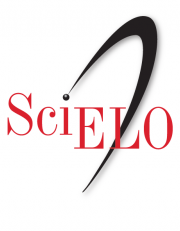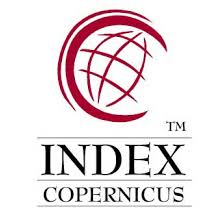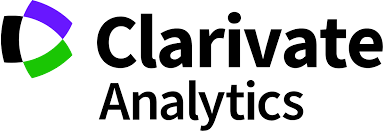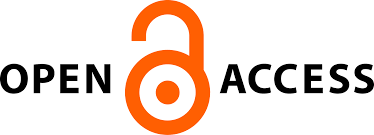Autores/as
Resumen
El estudio de hemosporidios en aves permite comprender la manera en que estos se distribuyen en los hospederos y si su presencia e intensidad de infección se relaciona con procesos de pérdida y degradación del hábitat. Con el objetivo de documentar la frecuencia de infección y parasitemia de hemosporidios en aves asociadas a tres coberturas vegetales (bosque denso, bosque fragmentado y pastos arbolados) a diferentes altitudes, se tomaron muestras se tomaron muestras de tejido sanguíneo por punción de la vena braquial. Se realizaron extendidos de sangre que fueron fijados, teñidos (Giemsa al 10%) y analizados con microscopio de luz. Se estimó la frecuencia de infección por género de hemoparásito y la parasitemia para cada uno de los individuos infectados. La frecuencia de infección general de hemosporidios fue de 22,2%, donde Leucocytozoon fue el género con mayor prevalencia (10,9%), seguido de Haemoproteus (8,7%) y Plasmodium (6,9%); además, se encontraron otros hemoparásitos como microfilaria (1,09%) y Trypanosoma (0,36%). La frecuencia de infección y la parasitemia de aves estuvo influenciada por factores ecológicos y taxonómicos, dependiendo del género de hemosporidio. La familia taxonómica del hospedero se asoció con los dos parámetros evaluados, especialmente en Haemoproteus y Plasmodium, mientras que en Leucocytozoon también influyó la altitud y tipo de cobertura. La familia que presentó mayor frecuencia de infección fue Thraupidae, con valores más altos en las especies Anisognathus somptuosus, Tangara xanthocephala, Tangara nigroviridis y Diglossa cyanea. Este estudio constituye la primera investigación sobre hemosporidios en la Bota Caucana, el cual contribuye al conocimiento de las interacciones ecológicas existentes en ambientes neotropicales, esencial para futuros esfuerzos de monitoreo y conservación de las aves colombianas.
Citas
Atkinson, C. T., Dusek, R. J., Woods, K. L. e Iko, W. M. (2000). Pathogenicity of avian malaria in experimentally infected Hawaii amakihi. Jornal of Wildlife Diseases, 36, 197-204.
Atkinson, C. T., Thomas, N. J. y Hunter, D. B. (2008). Parasitic Diseases Of Wild Birds. A John Wiley & Sons, Ltd.
Ayerbe-Quiñones, F. (2018). Guía ilustrada de la avifauna colombiana (Primera ed.). Punto Aparte. Wildlife Conservation Society.
Ayerbe-Quiñones, F., López-Ordóñez, J. P., González-Rojas, M. F., Estela, F. A., Ramírez-Burbano, M. B., Sandoval-Sierra, J. V. y Gómez-Bernal, L. G. (2008). Aves del departamento del Cauca, Colombia. Biota Colombiana, 9(2), 77-132. https://www.redalyc.org/pdf/491/49113173005.pdf
Barrow, L. N., McNew, S. M., Mitchell, N., Galen, S. C., Lutz, H. L., Skeen, H., Valqui, T., Weckstein, J. D. y Witt, C. C. (2019). Deeply conserved susceptibility in a multi-host, multi-parasite system. Ecology Letters, 22(6), 987-998. https://doi.org/10.1111/ele.13263
Basto, N., Rodríguez, O. A., Marinkel, C. J., Gutiérrez, F. y Matta, N. E. (2006). Hematozoarios en aves del Parque Nacional Natural La Macarena. Caldasia, 28(2), 371-377.
Bennett, G. F. y Borrero, J. I. (1976). Blood parasites of some birds from Colombia. Jornal of Wildlife Diseases, 12, 454-458.
Bukauskaitė, D., Chagas, C., Bernotienė, R., Žiegytė, R., Ilgūnas, M., Iezhova, T. y Valkiūnas, G. (2019). A new methodology for sporogony research of avian haemoproteids in laboratory-reared Culicoides spp., with a description of the complete sporogonic development of Haemoproteus pastoris. Parasites and Vectors, 12(1), 582. https://doi.org/10.1186/s13071-019-3832-x
Campbell, T. y Ellis, C. (2007). Avian And Exotic Animal Haematology And Cytology (Third ed.). Blackwell Publishing. Chasar, A., Loiseau, C., Valkiunas, G., Iezhova, T., Smith, T. B. y Sehgal, N. M. (2009). Prevalence and diversity patterns of avian blood parasites in degraded African rainforest habitats. Molecular Ecology, 18(19), 4121-4133. https://doi.org/10.1111/j.1365-294X.2009.04346.x
Civitello, D. J., Cohen, J., Fatima, H., Halstead, N. T., Liriano, J., McMahon, T. A., Ortega, C. N., Sauer, E. L., Sehgal, T., Young, S. y Rohr, J. R. (2015). Biodiversity inhibits parasites: Broad evidence for the dilution effect. Proceedings of the National Academy of Sciences of the United States of America, 112(28), 8667-8671. https://doi.org/10.1073/pnas.1506279112
Cruz, A. E. (Comp.). (2012). Catálogo de patrones de coberturas de la tierra Colombia. Instituto de Hidrología Meterología y Estudios Ambientales (IDEAM), MinAmbiente y Desarrollo Sostenible.
Cuatrecasas, J. (1958). Aspectos de la vegetación natural de Colombia. Parte I. Revista de la Academia Colombiana de Ciencias Exactas, Físicas y Naturales, 10(40), 221-268.
De Angeli, D. (2024). Assessing global drivers of parasite diversity: host diversity and body mass boost avian haemosporidian
diversity. Parasitology, 151(5), 478-484. https://doi.org/10.1017/S0031182024000313
De Angeli, D., Khan, A. U., Ferreira, F. C, Beirao, M. V., Puchorim, M., Moreira, P. A. y Braga, M. E. (2023). Host phylogeny and seasonality shapes avian haemosporidian prevalence in a Brazilian biodiverse and dry forest: the Caatinga. Parasitology, 150, 1277-1285. https://doi.org/10.1017/S0031182023000549
Dunn, J. C., Cole, E. F. y Quinn, J. L. (2011). Personality and parasites: sex-dependent associations between avian malaria infection and multiple behavioural traits. Behavioral Ecology and Sociobiology, 65(7), 1459-1471. https://doi.org/10.1007/s00265-011-1156-8
Fecchio, A., Dias, R. I., Ferreira, T. V., Reyes, A. O., Dispoto, J. H., Weckstein, J. D., Bell, J. A., Tkach, V. V. y Pinho, J. B. (2022). Host foraging behavior and nest type influence prevalence of avian haemosporidian parasites in the Pantanal. Parasitology Research, 121(5), 1407-1417. https://doi.org/10.1007/s00436-022-07453-3
Fecchio, A., Ellis, V. A., Bell, J. A., Andretti, C. V., D’horta, F. M., Silva, A. M., Tkach, V. V. y Weckstein, J. D. (2017). Avian malaria, ecological host traits and mosquito abundance in southeastern Amazonia. Parasitology, 144(8), 1117-1132. https://doi.org/10.1017/S003118201700035X
Fecchio, A., Lima, M. R., Silveira, P., Braga, E. M. y Marini, M. A. (2011). High prevalence of blood parasites in social birds from a neotropical savanna in Brazil. Emu, 111(2), 132-138. https://doi.org/10.1071/MU10063
Fecchio, A., Robalinho, M. R., Svensson-Coelho, M., Marini, M. A. y Ricklefs, R. E. (2013). Structure and organization of an avian haemosporidian assemblage in a Neotropical savanna in Brazil. Parasitology, 140(2), 181-192.
Ferreira-Junior, F. C., Dutra, D. de A., Silveira, P., Campos, R., Witter, R., Souza, D. G., Pacheco, M. A., Escalante, A. A. y Braga, E. M. (2018). A new pathogen spillover from domestic to wild animals: Plasmodium juxtanucleare infects free-living passerines in Brazil. Parasitology, May, 1-10.
Ferreira, F. C., Rodrigues, R. A., Ellis, V. A., Leite, L. O., Borges, M. A. Z. y Braga, E. M. (2017). Habitat modification and seasonality influence avian haemosporidian parasite distributions in southeastern Brazil. Plos One, 12(6), e0178791. https://doi.org/10.1371/journal.pone.0178791
Galen, S. C., Suravi, R., Henry, M. y Weckstein, J. D. (2022). Parasite-associated mortality in birds: the roles of specialist parasites and host evolutionary distance. Biology Letters, 18(4), 20210575. https://doi.org/10.1098/rsbl.2021.0575
Gallina. (2015). Manual De Técnicas Del Estudio De La Fauna (S. Gallina (ed.); Primera ed). Instituto de Ecología, A.C. Xalapa, Veracruz, México.
Gao, K., Yang, Z., Huang, X. y Deng, W. (2024). Integrating host biological and ecological variables to predict probability of haemosporidian infection in raptors. Avian Research, 15(1), 100185. https://doi.org/10.1016/j.avrs.2024.100185
González, A. D., Lotta, I. A., García, L. F., Moncada, L. I. y Matta, N. E. (2015). Avian haemosporidians from Neotropical highlands: Evidence from morphological and molecular data. Parasitology International, 64(4), 48-59. https://doi.org/10.1016/j.parint.2015.01.007
González, A. D., Matta, N. E., Ellis, V. A., Miller, E. T., Ricklefs, R. E. y Gutiérrez, H. R. (2014). Mixed species flock, nest height, and elevation partially explain avian haemoparasite prevalence in Colombia. Plos One, 9(6), e100695.
Guillén-Rodríguez, Y. G., Santiago-Alarcón, D., Chapa-Vargas, L., Suárez‑Landa, M. T., Albino‑Miranda, S. e Ibáñez‑Bernal, S. (2024). Seasonal haemosporidian detection in mosquitoes (Diptera: Culicidae) and their interactions with vertebrate hosts in a Mexican cloud forest. Parasitology Research, 123, 379. https://doi.org/10.1007/s00436-024-08387-8
Haas, M., Baruš, V., Benedikt, V. y Literák, I. (2011). Microfilariae in birds in the Czech Republic, including a note on adult nematodes Eufilaria delicata in a song thrush Turdus philomelos. Parasitology Research, 109(5), 645-655. https://doi.org/10.1007/s00436-011-2297-4
Hammers, M., Komdeur, J., Kingma, S. A., Hutchings, K., Fairfield, E. A., Gilroy, D. L. y Richardson, D. S. (2016). Age-specific haemosporidian infection dynamics and survival in Seychelles warblers. Scientific Reports, 6, 29720. https://doi.org/10.1038/srep29720
Harrigan, R. J., Sedano, R., Chasar, A. C., Chaves, J. A., Nguyen, J. T., Whitaker, A. y Smith, T. B. (2014). New host and lineage diversity of avian haemosporidia in the northern Andes. Evolutionary Applications, 7, 799-811. https://doi.org/10.1111/eva.12176
Harvell, C. D., Mitchell, Ch. E., Ward, J. R., Altizer, S., Dobson, A. P., Ostfeld, R. S. y Samuel, M. D. (2002). Climate warming and disease risks for terrestrial and marine biota. Science’s Compass, 296(5576), 2158-2162. https://doi.org/10.1126/science.1063699
Hatcher, M. J., Dick, J, T, A. y Dunn, A. M. (2012). Diverse effects of parasites in ecosystems: Linking interdependent processes. Frontiers in Ecology and the Environment, 10, 186-194. https://doi.org/10.1890/110016
Hauptmanová, K., Benedikt, V. y Literak, I. (2006). Blood parasites in passerine birds in slovakian east carpathians. Acta Protozoologica, 45(1), 105-109.
Hernández‑Ospina, M. C., Chitán‑Guerrero, D., Alvarez‑Londoño, J., Bohada‑Murillo, M., Martínez‑Sánchez, E. T., Rivera‑Páez, F. A. y Castaño‑Villa, G. J. (2024). Avian haemosporidians of the genera Plasmodium and Haemoproteus from resident and Neotropical migrant birds in Colombia. Parasitology Research, 123(252), 4-13. https://doi.org/10.1007/s00436-024-08260-8
Hoesel, W., Santiago-Alarcón, D., Marzal, A. y Renner, S. C. (2020). Effects of forest structure on the interaction between avian hosts , dipteran vectors and haemosporidian parasites. BMC Ecology, 20, 1-12. https://doi.org/10.1186/s12898-020-00315-5
Hooper, D. U., Adair, E. C., Cardinale, B. J., Byrnes, J. E. K., Hungate, B. A., Matulich, K. L., González, A., Duffy, J. E., Gamfeldt, L. y O’Connor, M. I. (2012). A global synthesis reveals biodiversity loss as a major driver of ecosystem change. Nature, 486, 105-108. https://doi.org/10.1038/nature11118
Jones, W., Krishna, P. N. y Qvarnostrom, A. (2024). Location and timing of infection drives a sex-bias in Haemoproteus prevalence
in a hole-nesting bird. Parasitology, 151(8), 875-883. https://doi.org/10.1017/S0031182024001021
Lafferty, K. D., Allesina, S., Arim, M., Briggs, Ch. J., De Leo, G., Dobson, A. P., Dunne, J. A., Johnson, P. T. J., Kuris, A. M., Marcogliese, D. J.,
Martínez, N. D., Memmott, J., Marquet, P. A., McLaughlin, J. P., Mordecai, E. A., Pascual, M., Poulin, R. y Thieltges, D. W. (2008). Parasites in food webs: The ultimate missing links. Ecology Letters, 11(6), 533-546. https://doi.org/10.1111/j.1461-0248.2008.01174.x
LaPointe, D. A., Atkinson, C. T. y Samuel, M. D. (2012). Ecology and conservation biology of avian malaria. Annals of the New York Academy of Sciences, 1249, 211-226.
Laurance, S. G. W., Jones, D., Westcott, D., Mckeown, A., Harrington, G. y Hilbert, D. W. (2013). Habitat fragmentation and ecological traits influence the prevalence of avian blood parasites in a tropical rainforest landscape. Plos One, 8(10), e76227. https://doi.org/10.1371/journal.pone.0076227
Lotta-Arévalo, I. A., González, A. D., Gamboa-Suárez, B. A., Pacheco, M. A., Escalante, A. A., Moreno, C., Rodríquez-Fandíño, Ó., Cuervo, A. y Matta, N. E. (2023). Haemosporidians in non-Passerine birds of Colombia: An overview of the last 20 years of research. Diversity, 15(1), 57. https://doi.org/10.3390/d15010057
Lotta, I. A., González, A. D., Pacheco, M. A. y Escalante, A. A., Valkiūnas, G., Moncada, L. I. y Matta, N. E. (2015). Leucocytozoon pterotenuis sp. nov. (Haemosporida, Leucocytozoidae): description of the morphologically unique species from the Grallariidae birds, with remarks on the distribution of Leucocytozoon parasites in the Neotropics. Parasitology Research, 114(3), 1031-1044.https://doi.org/10.1007/s00436-014-4269-y
Lotta, I. A., Pacheco, M. A., Escalante, A. A., González, A. D., Mantilla, J. S., Moncada, L. I., Adler, P. H. y Matta, N. E. (2016). Leucocytozoon diversity and possible vectors in the neotropical highlands of Colombia. Protist, 00, 1-46.
Lotta, I. A., Valkiūnas, G., Pacheco, M. A., Escalante, A. A., Hernández, S. R. Matta, N. E. (2019). Disentangling Leucocytozoon parasite diversity in the neotropics: Descriptions of two new species and shortcomings of molecular diagnostics for leucocytozoids. IJP: Parasites and Wildlife, 9, 159-173. https://doi.org/10.1016/j.ijppaw.2019.05.002
Mantilla, J. S., González, A. D., Valkiūnas, G., Moncada, L. I. y Matta, N. E. (2013). Description and molecular characterization of Plasmodium (Novyella) unalis sp . nov . from the Great Thrush (Turdus fuscater) in highland of Colombia. Parasitology Research, 112(12), 4193-4204. https://doi.org/10.1007/s00436-013-3611-0
Marzal, A., De Lope, F., Navarro, C. y Møller, A. P. (2005). Malarial parasites decrease reproductive success: an experimental study in a passerine bird. Oecologia, 142(4), 541-545. https://doi.org/10.1007/s00442-004-1757-2
Matta N. E., y Rodríguez, O. A. (2001). Avian Haematoza. Acta Biológica Colombiana, 6(1), 27–34
Matta, N. E., Basto, N., Gutiérrez, F., Rodríguez, O. A. y Greiner, E. C. (2004). Prevalence of blood parasites in Tyrannidae (Flycatchers) in the eastern plains of Colombia. Memorias do Instituto Oswaldo Cruz, 99, 271-274. https://doi.org/10.1590/S0074-02762004000300005
Matta, N. E., Lotta, I. A., Valkiūnas, G., González, A. D., Pacheco, M. A., Escalante, A. A., Moncada, L. I. y Rodríquez-Fandiño, O. A. (2014a). Description of Leucocytozoon quynzae sp. nov. (Haemosporida, Leucocytozoidae) from hummingbirds, with remarks on distribution and possible vectors of leucocytozoids in South America. Parasitology Research, 113(2), 457-468.https://doi.org/10.1007/s00436-013-3675-x
Matta, N. E., Pacheco, M. A., Escalante, A. A., Valkiūnas, G., Ayerbe-Quiñones, F. y Acevedo-Cendales, L. D. (2014b). Description and molecular characterization of Haemoproteus macrovacuolatus n. sp. (Haemosporida, Haemoproteidae), a morphologically unique blood parasite of black-bellied whistling duck (Dendrocygna autumnalis) from South America. Parasitology Research, 113(8), 2991-3000. https://doi.org/10.1007/s00436-014-3961-2
Moens, M. A. J., Valkiūnas, G., Paca, A., Bonaccorso, E., Aguirre, N. y Pérez-Tris, J. (2016). Parasite specialization in a unique habitat: hummingbirds as reservoirs of generalist blood parasites of Andean birds. Journal of Animal Ecology, 85(5), 1234-1245. https://doi.org/10.1111/1365-2656.12550
Myers, S. S., Gaffikin, L., Golden, Ch. D., Ostfeld, R. S., Redford, K. H., Ricketts, T. H., Turner, W. R. y Osofsky, S. A. (2013). Human health impacts of ecosystem alteration. Proceedings of the National Academy of Sciences of the United States of America, 110(47), 18753-18760. https://doi.org/10.1073/pnas.1218656110
Neumann, A. E., Rubio-Suárez, M. y Renner, S. C. (2024). Haemosporidian intensity and nestlings ’ life‑ history along an urban‑to‑rural gradient. Scientific Reports, 14(17018). https://doi.org/10.1038/s41598-024-67824-x
Paredes-Leguizamón, G. (2018). Integrando las áreas protegidas al ordenamiento territorial: Caso Colombia (Primera ed.). PNNC y UICN.
Powell, G. V. N. (1985). Sociobiology and adaptive significance of interspecific foraging flocks in the neotropics. Ornithological Monographs, 1(36), 713-732. https://doi.org/10.2307/40168313
Pulgarín-R, P. C., Gómez, C., Bayly, M. J., Bensch, S., FitzGerald, A. M., Starkloff, N., Kirchman, J. J., González-Prieto, A, M., Hobson, K. A., Ungvari-Martin, J., Skeen, H., Castaño, M. I. y Cadena, C. D. (2018). Migratory birds as vehicles for parasite dispersal? Infection by avian haemosporidians over the year and throughout the range of a long‐distance migrant. Journal of Biogeography, 46(1), 83-96. https://doi.org/10.1111/jbi.13453
R Development Core Team. R. A language and environment for statistical computing. R Foundation for Statistical Computing, Vienna, Austria. 2008. ISBN: 3-900051-07-0. http://www.r-project.org
Reinoso-Pérez, M. T., Canales-Delgadillo, J. C., Chapa-Vargas, L. y Riego-Ruiz, L. (2016). Haemosporidian parasite prevalence, parasitemia, and diversity in three resident bird species at a shrubland dominated landscape of the Mexican highland plateau.Parasites & Vectors, 9(1), 307. https://doi.org/10.1186/s13071-016-1569-3
Remsen, J. V., Jr., J. I. Areta, E. Bonaccorso, S. Claramunt, G. Del-Rio, A. Jaramillo, D. F. Lane, M. B. Robbins, F. G. Stiles, and K. J. Zimmer. Version [date]. A classification of the bird species of South America. Museum of Natural Science, Louisiana State University. http://www.museum.lsu.edu/~Remsen/SACCBaseline.htm
Renjifo, S., Sanmartín, C. y De Zulueta, J. (1952). A survey of the blood parasites of vertebrates in eastern Colombia. Acta Tropica, 9(2), 151-169.
Renner, S. C., Lüdtke, B., Kaiser, S., Kienle, J., Schaefer, H. M., Segelbacher, G., Tschapka, M. y Santiago-Alarcón, D. (2016). Forests of opportunities and mischief: disentangling the interactions between forests, parasites and immune responses. International Journal for Parasitology, 46(9), 571-579. https://doi.org/10.1016/j.ijpara.2016.04.008
Rodríguez, O. A., Moya, H. y Matta, N. E. (2009). Avian blood parasites in the national natural park Chingaza: high Andes of Colombia. Hornero, 24(1), 1-6.
Sala, O. E., Chapin, F. S., Armesto, J. J., Berlow, E., Bloomfield, J., Dirzo, R., Huber-Sanwald, E., Huenneke, L. F., Jackson, R. B., Kinzig,A., Leemans, R., Lodge, D. M., Mooney, H. A., Oesterheld, M., Poff, N. L., Sykes, M. T., Walker, B. H., Walker, M. y Wall, D. H. (2000). Global biodiversity scenarios for the year 2100. Science, 287, 1770-1774. https://doi.org/10.1126/science.287.5459.1770
Santiago-Alarcón, D. y Marzal, A. (2020). Avian Malaria and Related Parasites in the Tropics. Springer Nature Switzerland AG. Santiago-Alarcón, D., Palinauskas, V. y Schaefer, H. M. (2012). Diptera vectors of avian Haemosporidian parasites: untangling parasite life cycles and their taxonomy. Biological Reviews, 87, 928-964. https://doi.org/10.1111/j.1469-185X.2012.00234.x
Schoepf, I., Olson, S., Moore, I. T. y Bonier, F. (2022). Experimental reduction of haemosporidian infection affects maternal reproductive investment, parental behaviour and offspring condition. Proceedings of the Royal Society, 289(1987), 20221978.https://doi.org/10.1098/rspb.2022.1978
Sebaio, F., Braga, E. M., Branquinho, F., Tonelli, L. y Marini, M. A. (2010). Blood parasites in Brazilian Atlantic Forest birds: Effects of fragment size and habitat dependency. Bird Conservation International, 20(4), 432-439. https://doi.org/10.1017/S0959270910000110
Tamayo-Quintero, J., Martínez-De la Puente, J., San-José, M., González-Quevedo, C. y Rivera-Gutiérrez, H. F. (2023). Bird community effects on avian malaria infections. Scientific Reports, 13, 11681. https://doi.org/10.1038/s41598-023-38660-2
Valkiūnas, G. (2005). Avian Malaria Parasites and Other Haemosporidia. CRC Press.
Valkiūnas, G. e Iezhova, T. A. (2018). Keys to the avian malaria parasites. Malaria Journal, 17(2), 1-24. https://doi.org/10.1186/s12936-018-2359-5
Valkiūnas, G. e Iezhova, T. A. (2022). Keys to the avian Haemoproteus parasites (Haemosporida, Haemoproteidae). Malaria Journal, 21(1), 269. https://doi.org/10.1186/s12936-022-04235-1
Valkiūnas, G., Palinauskas, V., Ilgūnas, M., Bukauskaitė, D., Dimitrov, D., Bernotienė, R., Zehtindjiev, P., Ilieva, M. e Iezhova, T. A. (2014). Molecular characterization of five widespread avian haemosporidian parasites (Haemosporida), with perspectives on the PCR-based detection of haemosporidians in wildlife. Parasitology Research, 113(6), 2251-2263. https://doi.org/10.1007/s00436-014-3880-2
Valkiūnas, G., Salaman, P. e Iezhova, T. A. (2003). Paucity of Hematozoa in Colombian Birds. Journal of Wildlife Diseases, 39(2), 445-448.
Van Riper, Ch., Van Riper, S. G. M., Goff, M. L. y Laird, M. (1986). The epizootiology and ecological significance of malaria in Hawaiian land birds. Ecological Monographs, 56(4), 327-344.
Vélez, D., Tamayo, E., Ayerbe-Quiñones, F., Torres, J., Rey, J., Castro-Moreno, C., Ramírez, B. y Ochoa-Quintero, J. M. (2021). Distribution of birds in Colombia. Biodiversity Data Journal, 9, 1-16. https://doi.org/10.3897/BDJ.9.e59202
Vittor, A. M., Gilman, R. H., Tielsch, J., Glass, G., Shields, T., Sánchez, W., Pinedo-Cancino, V. y Patz, J. A. (2006). The effect of deforestation on the human-biting rate of Anopheles darlingi , the primary vector of Falciparum malaria in the Peruvian Amazon. The American Journal of Tropical Medicine and Hygiene, 74(1), 3-11.
Walther, E. L., Valkiūnas, G., González, A. D., Matta, N. E., Ricklefs, R. E., Cornel, A. y Sehgal, N. M. (2014). Description, molecular characterization, and patterns of distribution of a widespread New World avian malaria parasite (Haemosporida: Plasmodiidae), Plasmodium (Novyella) homopolare sp. nov. Parasitology Research, 113(9), 3319-3332. https://doi.org/10.1007/s00436-014-3995-5
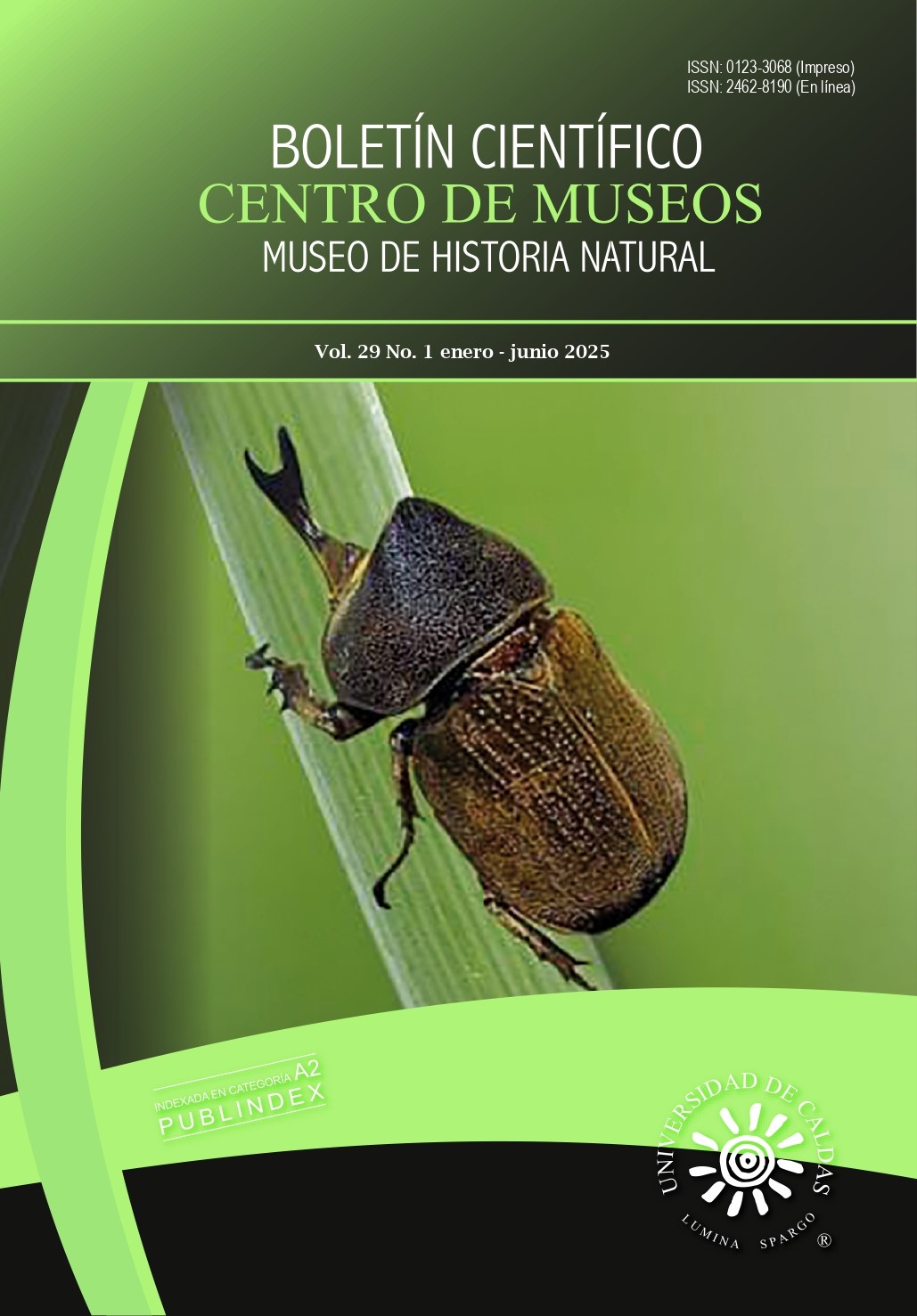
 PDF
PDF
 FLIP
FLIP









